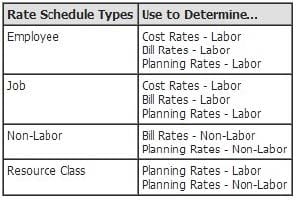Exam Details
Exam Code
:1Z0-511Exam Name
:Oracle E-Business Suite (EBS) R12 Project EssentialsCertification
:Oracle CertificationsVendor
:OracleTotal Questions
:70 Q&AsLast Updated
:Mar 27, 2025
Oracle Oracle Certifications 1Z0-511 Questions & Answers
-
Question 21:
A customer needs to enable all employees to enter timecards through the web against projects and tasks. What needs to be implemented to allow time to be recorded in Projects?
A. Project CostingOracleTime andLaborHuman Resources
B. OracleTime andLaborPayrollPurchasing
C. Project CostingProject ManufacturingHuman Resources
D. Projects Resource ManagementOracleTime and LaborHuman Resources
E. Project CostingOracle Time and LaborHuman ResourcesPayroll
-
Question 22:
A customer enables transaction controls at the Project level. Oracle Project Costing checks the control when the customer ________.
A. transfers an expenditure item to another task of the same project
B. runs the PRC: Distribute Labor Costs concurrent program
C. runsthe PRC: Transaction Import concurrent program
D. entersaproject-related invoice distributionin Oracle Payables
E. enters an online or preapproved expenditureitem
-
Question 23:
Your company wants to define all its equipments as Non-Labor resources to track the cost incurred on the usage of these equipments, when defining the equipment. When defining the equipment as a Non- Labor resource in the system, you
need to assign an expenditure type to it. What kind of expenditure type to it.
What kind of expenditure type can be assigned to a Non-Labor resource?
A. expenditure type defined withExpenditureType Class as Work in Process
B. expenditure type defined with ExpenditureType Class as Burden transactions
C. expenditure type defined withExpenditure Type Class as Supplier Invoices
D. expenditure type defined with Expenditure Type Class as Miscellaneous Transactions
E. expenditure type defined with Expenditure Type Class as Usages
-
Question 24:
A company requires advance payments for their contract projects. How would they ensure that for specific types of work they always have an advance payment?
A. Create a specific agreement type and use the advance receipts required extension toensure that theseagreements require advancepayments.
B. Set the customer profilein Accounts Receivable to require advance payments.
C. Createa transaction control for specificagreement types to ensure thatadvance paymentsare received.
D. Entera negative agreement value andfunded amount.
E. Fund the projects with a dummy agreement.
-
Question 25:
Which types of rate schedules should be defined to allow rates to be used to generate financial plans?
A. Job Labor Rates ScheduleNon Labor Rate Schedule
B. Resource Class SchedulePlanning Rate ScheduleLabor Rates Schedule
C. Resource Class ScheduleLabor Rates ScheduleNon Labor Rate Schedule
D. ResourceClass SchedulePlanning Rate ScheduleNon LaborRates Schedule
-
Question 26:
Identify the correct setup to Integrate Project costing with Oracle Inventory.
A. In Oracle Inventory, enable Project Cost Collection for each organization.In Oracle Projects, define an expenditure type with class "Inventory."Define the project related transaction source in Oracle Inventory.
B. Set up Oracle Project Manufacturing.In Oracle Projects, define an expenditure type with class "Inventory."Define the project-relatedtransaction source in Oracle Inventory.
C. In Oracle Inventory, enable Project Cost Collection for each organization.In Oracle Projects, define an expenditure type with class "Inventory."Define the project-related transaction type in Oracle Inventory.
D. Oracle Project Manufacturing must be set up.In Oracle Inventory, enable Project Cost Collection for each organization.Define the project-related transaction source inOracle Inventory
-
Question 27:
An organization has agreed to bill rates based on a person's job, which are updated annually. The rates are recorded on a default bill rate schedule that is attached to each project. An employee has and HR assignment job of Consultant. However, the employee is temporarily working on a project as a Project Manager. What is the correct way to ensure that the employee's time is billed correctly?
A. Amend the employee's HR assignment to Project Manager.
B. Add the employee as a separate line to the defaultbill rate schedule.
C. Use the transaction controlfunctionalityat the project level.
D. Use the assignment override at the project level.
E. Use the employee bill rate override at the project level.
-
Question 28:
Your company has set up the burdening functionality to capture the overheads incurred on all projects. They have decided to store these overhead costs as a separate expenditure item on the same project and also charge it to a separate expense account. Which step would you perform to set up the required expense account?
A. Setup the accountat the expenditure typedefined for the Burden transaction.
B. Setupthe Total Burdened Cost Credit AutoAccounting function.
C. Set up the Burden Cost Account AutoAccounting function.
D. Set up the BurdenCostClearing Account AutoAccountingfunction.
E. Set up the accountatthe expenditure category defined for the Burden transaction.
-
Question 29:
Identity three transactions that can be entered as a pre-approved expenditure batch:
A. Burden
B. Supplier Invoices
C. Usages
D. Expense Reports
E. Miscellaneous
-
Question 30:
A company has multi-currency projects and tasks. What is the hierarchy in which the currency attributes are allocated to a transaction?
A. Project,Task
B. Implementation Options, Project,Task
C. Task,Project, Implementation Options
D. Task,Implementation Options, Project
Related Exams:
1Z0-020
Oracle8i: New Features for Administrators1Z0-023
Architecture and Administration1Z0-024
Performance Tuning1Z0-025
Backup and Recovery1Z0-026
Network Administration1Z0-034
Upgrade Oracle9i/10g OCA to Oracle Database OCP1Z0-036
Managing Oracle9i on Linux1Z0-041
Oracle Database 10g: DBA Assessment1Z0-052
Oracle Database 11g: Administration Workshop I1Z0-053
Oracle Database 11g: Administration II
Tips on How to Prepare for the Exams
Nowadays, the certification exams become more and more important and required by more and more enterprises when applying for a job. But how to prepare for the exam effectively? How to prepare for the exam in a short time with less efforts? How to get a ideal result and how to find the most reliable resources? Here on Vcedump.com, you will find all the answers. Vcedump.com provide not only Oracle exam questions, answers and explanations but also complete assistance on your exam preparation and certification application. If you are confused on your 1Z0-511 exam preparations and Oracle certification application, do not hesitate to visit our Vcedump.com to find your solutions here.
